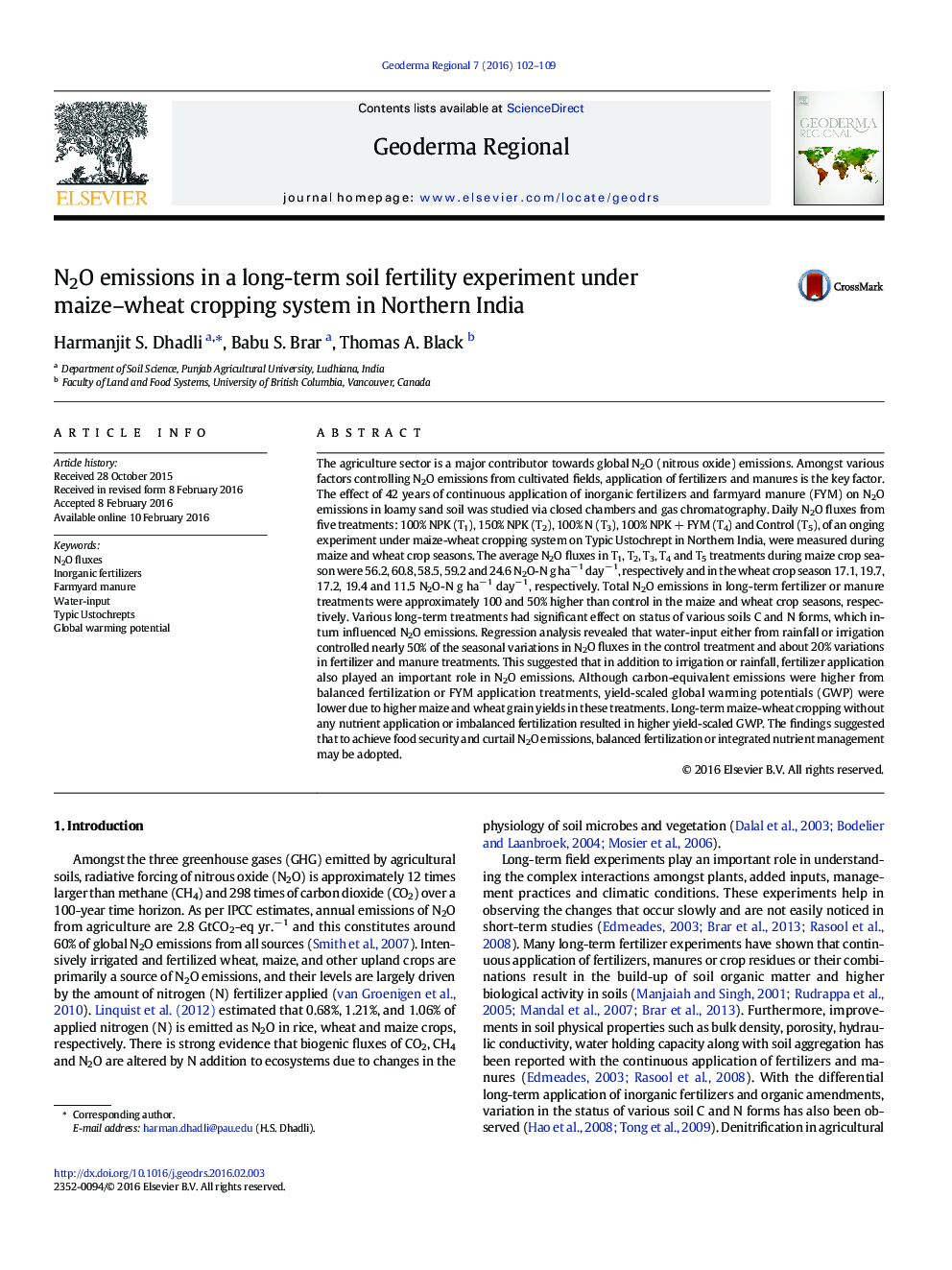| کد مقاله | کد نشریه | سال انتشار | مقاله انگلیسی | نسخه تمام متن |
|---|---|---|---|---|
| 4480762 | 1316744 | 2016 | 8 صفحه PDF | دانلود رایگان |
• It is first study in Northern India reporting the effect of differential application of fertilizers and manures on N2O emissions in long-term experiment under maize-wheat cropping system.
• Temporal variations in N2O fluxes during a cropping period were found related to water-input and escalated with fertilizer-N application, while, long-term application of farmyard manure significantly affected total N2O emissions during two crop seasons.
• Based on yield-scaled global warming potential of different treatments, it can be concluded that to achieve the food security and to curtail N2O emissions, balanced fertilization or integrated nutrient management may be adopted.
The agriculture sector is a major contributor towards global N2O (nitrous oxide) emissions. Amongst various factors controlling N2O emissions from cultivated fields, application of fertilizers and manures is the key factor. The effect of 42 years of continuous application of inorganic fertilizers and farmyard manure (FYM) on N2O emissions in loamy sand soil was studied via closed chambers and gas chromatography. Daily N2O fluxes from five treatments: 100% NPK (T1), 150% NPK (T2), 100% N (T3), 100% NPK + FYM (T4) and Control (T5), of an onging experiment under maize-wheat cropping system on Typic Ustochrept in Northern India, were measured during maize and wheat crop seasons. The average N2O fluxes in T1, T2, T3, T4 and T5 treatments during maize crop season were 56.2, 60.8, 58.5, 59.2 and 24.6 N2O-N g ha− 1 day− 1, respectively and in the wheat crop season 17.1, 19.7, 17.2, 19.4 and 11.5 N2O-N g ha− 1 day− 1, respectively. Total N2O emissions in long-term fertilizer or manure treatments were approximately 100 and 50% higher than control in the maize and wheat crop seasons, respectively. Various long-term treatments had significant effect on status of various soils C and N forms, which in-turn influenced N2O emissions. Regression analysis revealed that water-input either from rainfall or irrigation controlled nearly 50% of the seasonal variations in N2O fluxes in the control treatment and about 20% variations in fertilizer and manure treatments. This suggested that in addition to irrigation or rainfall, fertilizer application also played an important role in N2O emissions. Although carbon-equivalent emissions were higher from balanced fertilization or FYM application treatments, yield-scaled global warming potentials (GWP) were lower due to higher maize and wheat grain yields in these treatments. Long-term maize-wheat cropping without any nutrient application or imbalanced fertilization resulted in higher yield-scaled GWP. The findings suggested that to achieve food security and curtail N2O emissions, balanced fertilization or integrated nutrient management may be adopted.
Journal: Geoderma Regional - Volume 7, Issue 2, June 2016, Pages 102–109
